Geometric Progression (GP), Arithmetic Progression (AP), Arithmetico-Geometric Progression (AGP), Harmonic Progression(HP), Arithmetic, Geometric and Harmonic Mean | Definition, Formula, Solved Exampl - Finite Sequences | 11th Mathematics : UNIT 5 : Binomial Theorem, Sequences and Series
Chapter: 11th Mathematics : UNIT 5 : Binomial Theorem, Sequences and Series
Finite Sequences
Finite
Sequences
A sequence is a list
of elements with a particular order. While the idea of a sequence of numbers, a1, a2, · · · , is straight forward,
it is useful to think of a sequence as a function whose domain is either the set of first n natural numbers or N. Throughout this chapter, we consider only
sequences of real numbers and we will refer to them as sequences. The
arithmetic sequences and geometric sequences are also known as arithmetic
progressions(AP) and geometric progressions (GP). Let us recall, the basic
definitions of sequences and series.
·
If X is any set and n ∈ N, then any function f : {1, 2, 3, . . . , n} → X is called a finite sequence on X and any function g : N → X is called an infinite sequence on X. The value f(n) of the function f at n is denoted by an and the sequence
itself is denoted by (an).
·
If the set X happens to be a set
of real numbers, the sequence is called a numerical sequence or a sequence of
real numbers.
·
Though every sequence is a function, a function is not
necessarily a sequence.
·
Unlike sets, where elements are not repeated, the terms in a
sequence may be repeated. In particular, a sequence in which all terms are same
is called a constant sequence.
·
A useful way to visualise a sequence (an) is to plot the graph of {(n, an) : n ∈ N} which gives some details about the sequence.
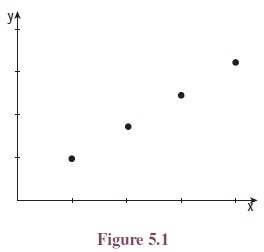
1. Arithmetic and Geometric Progressions
Progressions are some special
cases of sequences where the terms of the sequences are either in increasing
form or decreasing form.
We recall some definitions and
results we discussed in earlier classes on arithmetic and geometric
progressions.
Arithmetic Progression (AP)
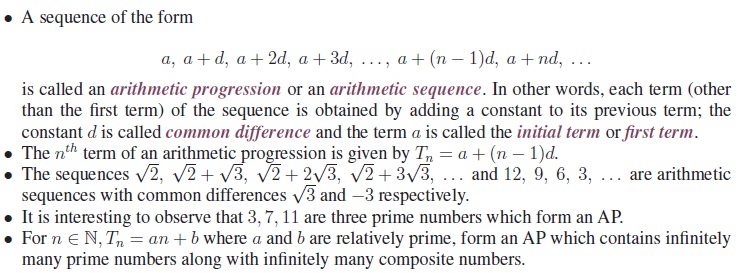
Geometric Progression (GP)
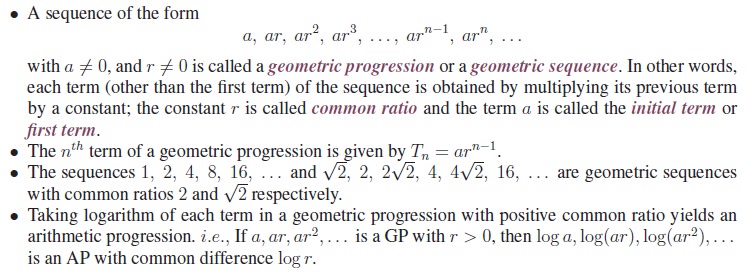
It is interesting to
note that the constant sequence c, c, c, . . . is an arithmetic
sequence and is also a geometric sequence if c ¹
0.
Let us consider the
special constant sequence 0, 0,
0,
0, . . . . We have no problem in seeing this as an arithmetic sequence.
But when we try to see this as a geometric sequence clearly the initial term a must be 0. What can we say about the common ratio r? If we take r as 1, 2 or any other
number we get the same sequence 0, 0,
0,
0, . . . . We are left with the situation where a geometric sequence has
infinitely many common ratios. To overcome these confusions some mathematicians
exclude this sequence from the class of geometric sequences by assuming a =
0 in the definition.
(We made this assumption)
2. Arithmetico-Geometric Progression (AGP)
Combining arithmetic and
geometric progressions, a new progression called arithmetico geometric
progression is formed. As we use the abbreviations AP and GP for arithmetic
progressions and geometric progressions, we use the abbreviation AGP for
arithmetico geometric progression. AGP’s arise in various applications, such as
the computation of expected value in probability theory.

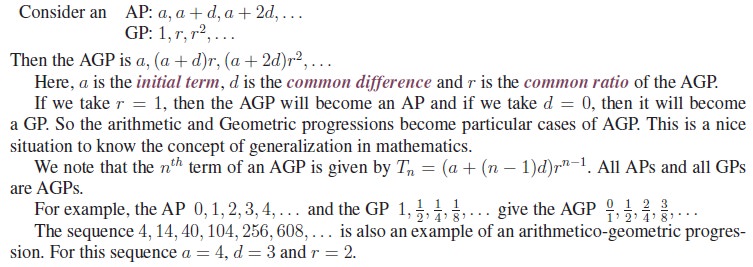
3. Harmonic Progression (HP)
Harmonic progression is one of
many important sequences and is closely related to the arithmetic progression.
Harmonic progression is widely used.

Note that a sequence is in
harmonic progression if its reciprocals are in arithmetic progression. But we
should not say that harmonic progressions are reciprocals of arithmetic
progressions; in fact, if an arithmetic sequence contains a zero term, then its
reciprocal is not meaningful. Of course, if an arithmetic progression contains
no zero term, then its reciprocal is a harmonic progression. So a general
harmonic progression will be of the form

As the denominator of
a fraction cannot be 0, a + kd ¹
0 for any integer k ≥ 0. So the condition –a/a is not a whole number is essential. Problems in harmonic
progression can be converted into problems in arithmetic progression and be
solved using arithmetic progression techniques and formulae.
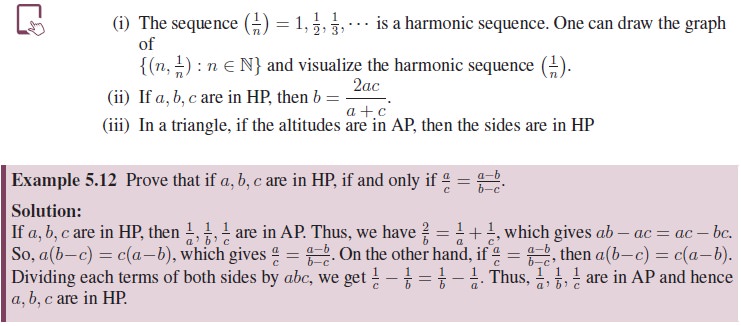

What can we say about constant
sequences? All constant sequences other than the zero sequence are harmonic
progressions also.
4. Arithmetic, Geometric and Harmonic Mean
We know the concept of “average”. There are many “averages”. Arithmetic mean (AM),
Geometric mean(GM) and Harmonic mean(HM) are also some averages. Let us now
recall the definitions of arithmetic mean and geometric mean, where the terms
need not in AP or GP.
Arithmetic Mean and Geometric Mean

The numbers a1, a2, a3, . . . , an need not be distinct
and it is not necessary that the numbers are positive. It easily follows from
the definition that 16 is the arithmetic
mean of the numbers 14, 14,
17, 20, 15.
Taking the
multiplication in place of addition and nth root in place of
division by n in the definition of
arithmetic mean we get the definition of geometric mean.

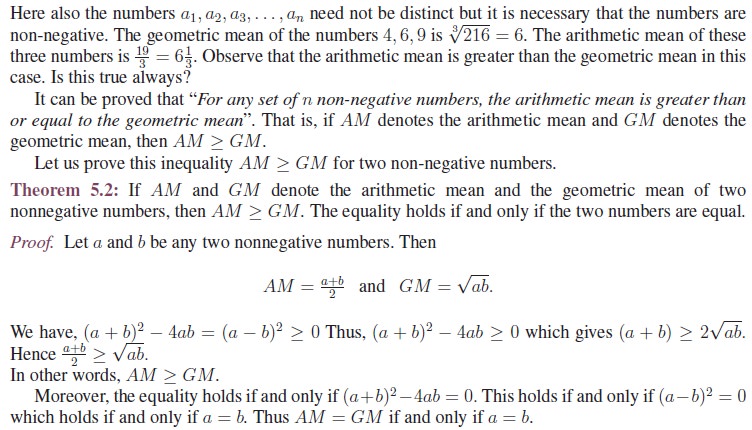
Geometrical
Proof for AM ≥ GM
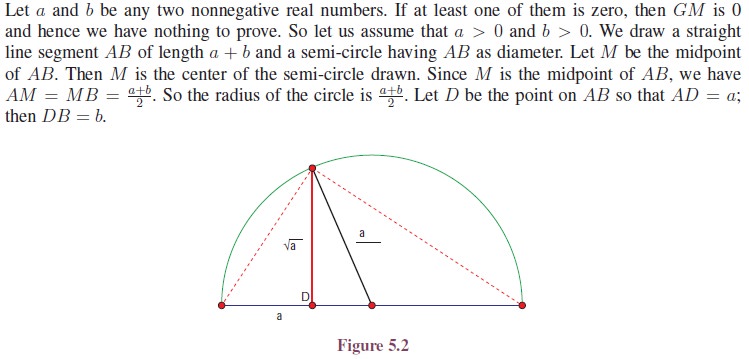
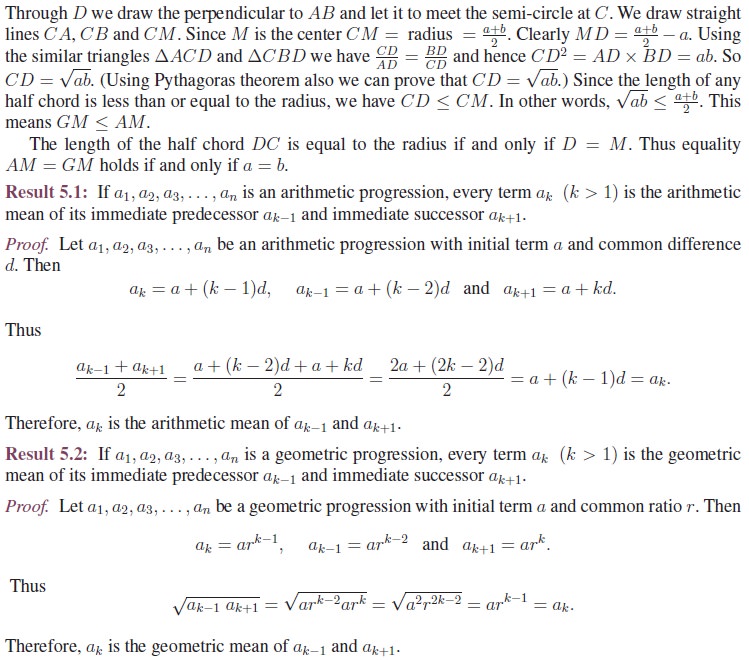
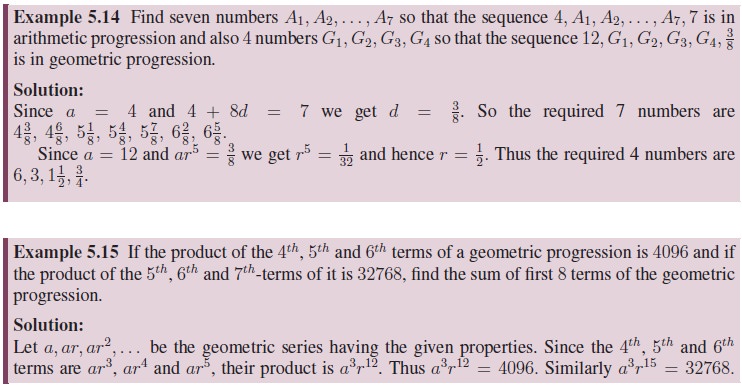

Harmonic Mean

It can be proved that
“For any set of n positive numbers, the
geometric mean is greater than or equal
to the harmonic mean”. That is, GM ≥ HM.
Let us prove this
inequality GM ≥ HM for two non-negative numbers.
Theorem 5.3: If
GM and
HM denote the geometric mean and the harmonic mean of two
non-negative numbers, then GM ≥ HM. The equality holds
if and only if the two numbers are equal.
Proof. Let a and b be any two positive numbers. Then
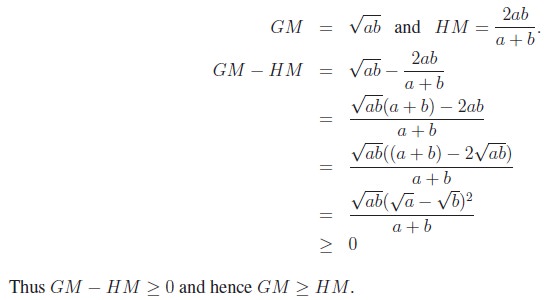
We have already proved
that AM ≥ GM and now we have GM ≥ HM. Combining these two,
we have an important inequality AM ≥ GM ≥ HM.
Result 5.3: For any two positive numbers, the three means AM, GM and HM are in geometric progression.
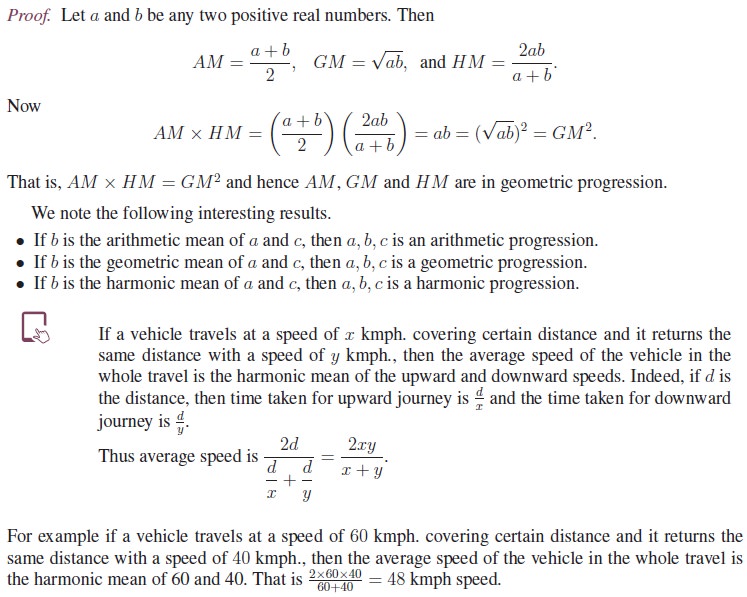
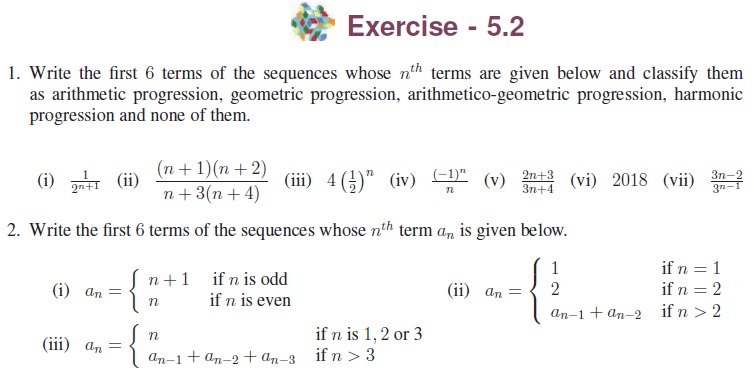
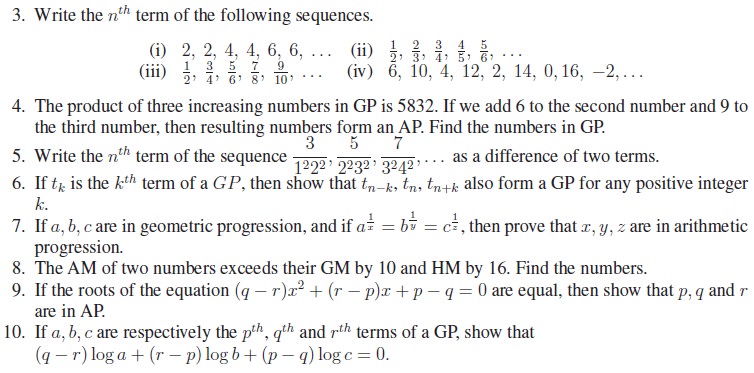
Related Topics